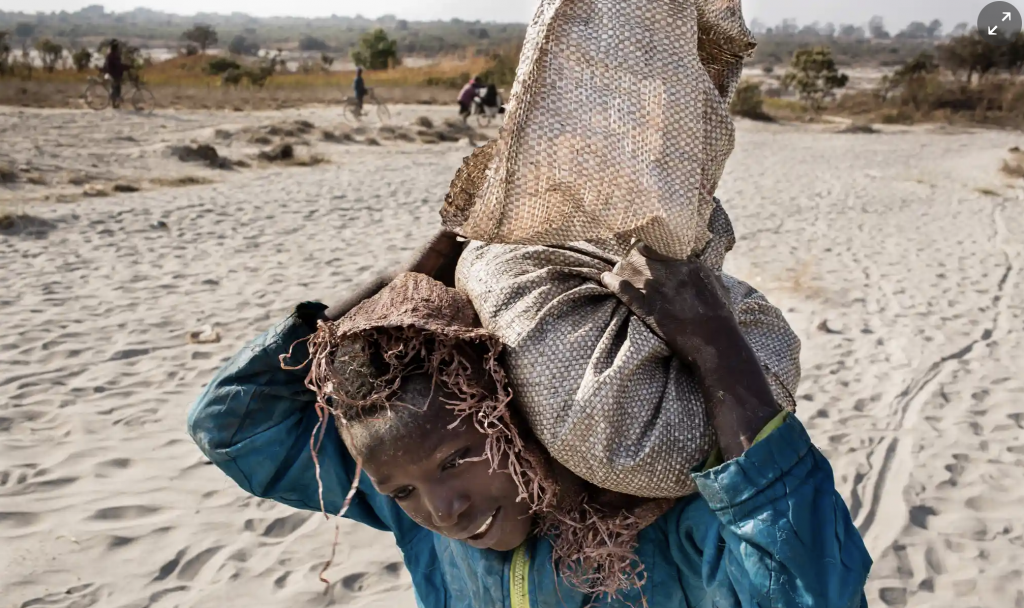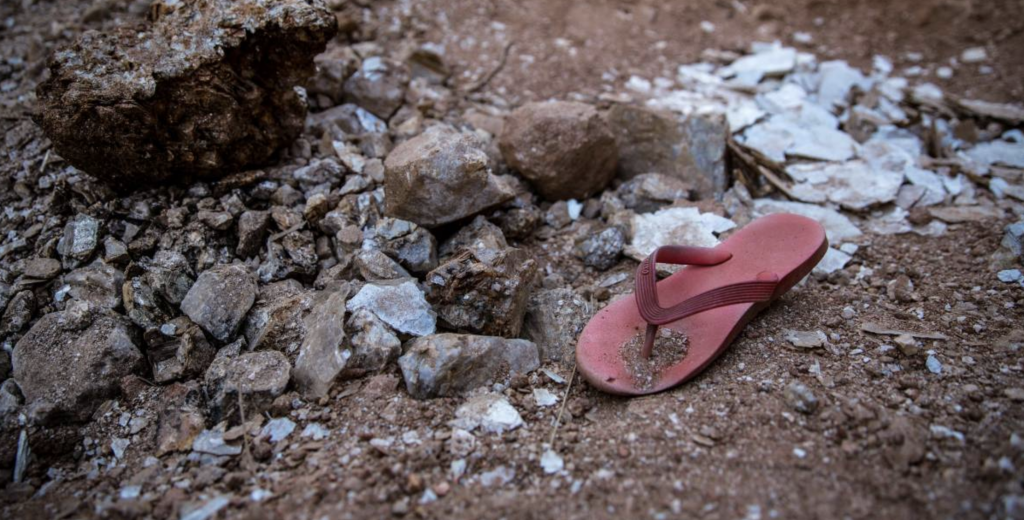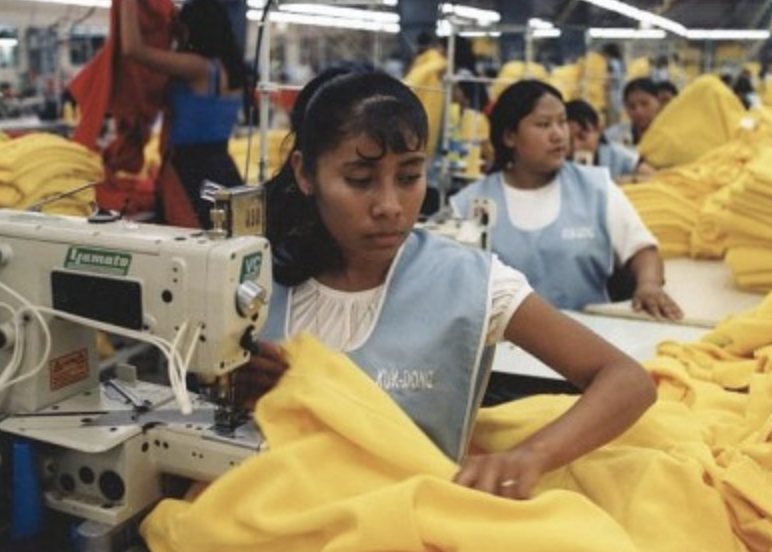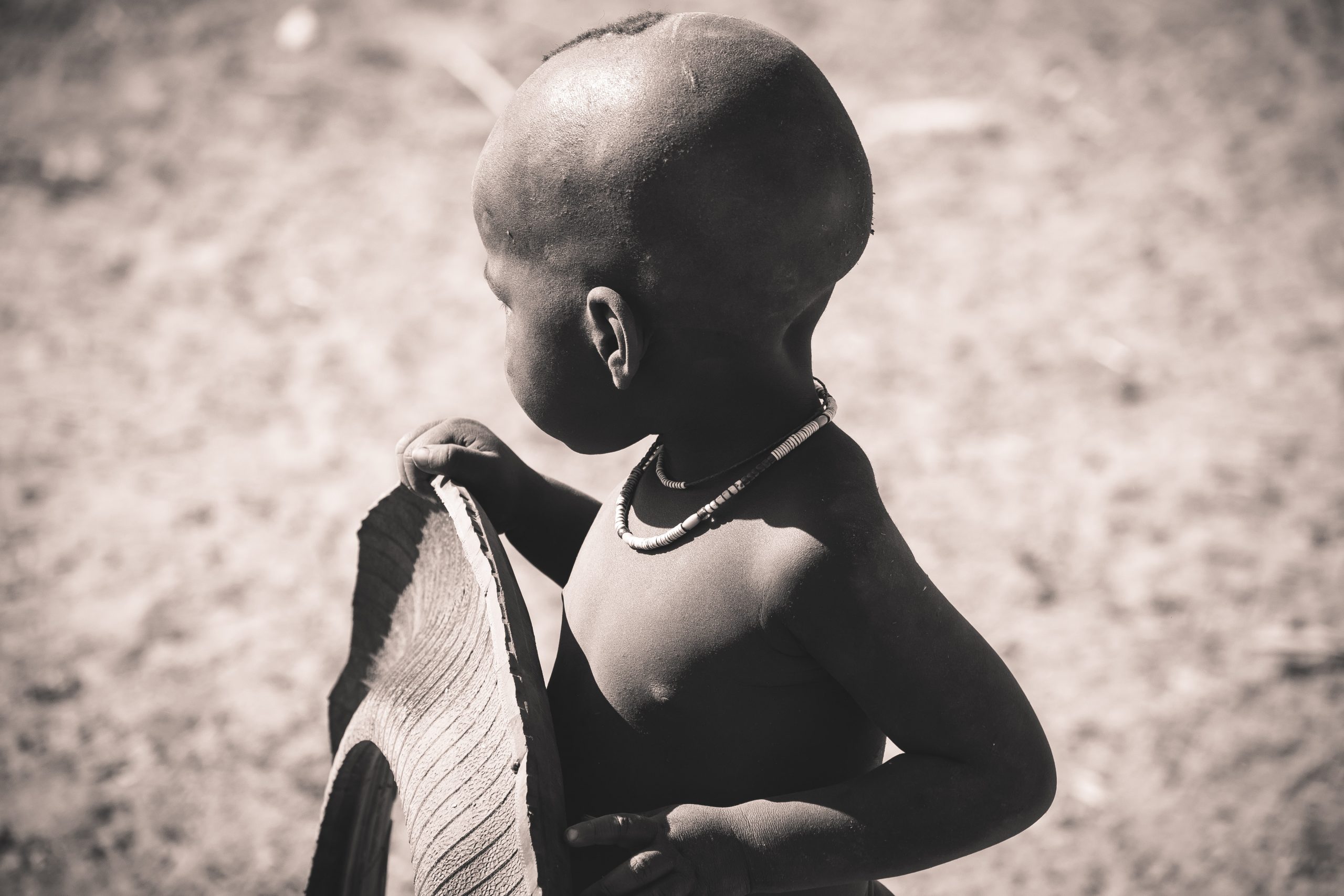Sometime in our childhood, we must have argued with our parents, refusing to go to school. Despite all the tantrums we, as children throw, the pouts we put on our faces, we are loved and embraced as sweethearts. As we grow older, we are compared to “African or third-world children”, as if they are symbols of misfortune. From a young age, we are instilled with the visual image of them wearing worn-out clothes, out wandering somewhere to make meager money, or even coerced into becoming child soldiers. We are told to be grateful, for we are privileged. Today, we frown upon the use of child labor, moan about injustice in the world, and quickly move on with our lives. It is somewhat funny, despite the disgust we express to our friends and families, we are ignorant enough not to know the footprints of child labor in our daily lives; and furthermore, indifferent enough not to do anything.
New notification: a brutal reality check
As sunlight radiating from outside the window gently wakes you up, you reach out to your night table, searching for your phone. Whilst cuddling your blanket, you aimlessly scroll through Facebook and Instagram on your phone. You continue listening, watching, working, and even texting on your laptop throughout the day. Who knew that these electronics we all hold dearly, ironically, are driven by child labor?

“Cobalt”, as described accurately by the Guardian, “is found in every lithium-ion rechargeable battery on the planet – from smartphones to tablets to laptops to electric vehicles”. The Democratic Republic of Congo “accounts for around 2/3 of global cobalt production” – with its unique geological advantage, the country has risen as “the world’s largest cobalt producer”. The ever-increasing global demand for cobalt in recent years, coupled with multinational companies’ indifference to the source of their supply chain, has seen the scale of child labor in cobalt mining in Congo has violently escalated. “UNICEF estimated 40,000 children working in DRC mines”. The macro-environment in Congo, generally speaking, paves the way to child labor. The very fact that poverty is still very much entrenched in the underdeveloped Congo makes families and children, in particular, coerced to work in mines and are eventually susceptible to exploitation. At the same time, corruption which remains an endemic problem translates into collusion between government officials and businesses, where officials turn a blind eye to the children’s sufferings in cobalt mines in exchange for monetary benefits.

Children often “dig cobalt out of the earth by hand” without any “protective equipment like face masks, work clothing and gloves”. Prolonged “exposure” to cobalt can result in “hard metal lung diseases”, life-threatening injuries and even death. Robbed of their childhood and more importantly, education, poverty chain within the family is here to stay. The melancholy prevails.
Shimmer and Darkness
Your heart probably sank for a moment reading the article, disgusted by the inhumanity creeping in your electronics and also horrified that such sickening exploitation was previously unheard of. Lying in bed in contemplation, your phone alarm went off again. Taking a deep breath, you once again picked your phone up, consoling yourself that there really is nothing much you can do. To get ready for work, you clean yourself up and sit in front of your dressing table. As you slowly put on your makeup, you compartmentalize what you’ve read about the atrocity in cobalt-mining. Little do you know, the very products that make your face glow and shimmer also originate from child labor.

Mica, also “mineral products”, as reported by the Guardian, is a “glittery substance used in blusher, eyeliner, eye shadow, mascara, lipstick and foundation”. India “accounts for 60% of global production”, making it the “world’s largest producer of sheet mica”. Terre Des Hommes reported that “more than 22,000 children are employed as child laborers in mica mining areas of Jharkhand and Bihar”. The story of child labor involved in mica-mining in India is similar to that of cobalt-mining in Congo. “Poverty” stemmed from “social inequities reinforced by discrimination” forces children from families of lower castes to work in mica mines for a living. At the same time, child labor laws in India are highly underdeveloped – it was not until 2016 that the government finally “banned the employment of children under the age of 14, who previously were restricted only from toiling in industries that are deemed hazardous”. As has been identified by Mr. Kailash Satyarthi, a renowned Nobel Peace Prize winner, the new law, by allowing children to work in “family enterprises that covers even the businesses of distant relatives”, would ultimately fail to eradicate child labor; while other critics slammed the law for its lack of enforceability.

At this point, the agony derived from child labor is clear. Without enlightening education, there is no bright future. Without stringent regulations and harsh legal consequences for violation, children’s blood continue to spill.
Sweatshops: Still in Style
Maybe some of you are still sceptical. Brows knitted together, you march towards your closet, hoping to throw on a dress and forget about the disturbing facts you have just read. Oops, the very dress in your hands might also be linked to child labor.

The buzzword, “sweatshops” can be traced back to the 1990s, and was, perhaps, the representation of a reshuffling of world order and the remodeling of business practices brought about by globalization. Multinational companies, such as Nike, has since then, outsourced specific sections of their manufacturing processes to factories in other foreign countries. Most often than not, sweatshops are specifically present in developing countries, such as Bangladesh and China, and are known for their appalling working conditions, low wages, long working hours, and the use of child labor. Sweatshops, although receiving much less attention than they did in the 1990s, unfortunately, are still active and operate across the world.
What’s next?
Having recognised child labor footprints in our daily lives, what do we do next? Do we stop using these products, which in hindsight, is not feasible? Lauren Singer, an infamous environment advocate, in one of her videos, once insightfully commented on wasteful product packaging. Putting her words into the context of child labor – the burden of tracing sources, eliminating child labor should be on companies, not consumers. Economically, when there is a demand, there is supply. When companies dedicate their resources to tracing sources of ingredients, monitoring use of child labor by raw materials, suppliers and businesses whom they outsource to, they will definitely change the dynamics. At the same time, businesses may assimilate what Lush did – replacing natural mica in which child labor is implicated with synthetic ones.
We, as consumers, however, also play a part in child labor – we have, unknowingly, endorsed such cruelty for many years. While it is impossible to not use certain products, such as laptops, we can always make a change, however little. Start by purchasing more from companies which are actively making efforts to eradicate child labor. While there are necessities that we cannot avoid, such as smartphones, we can always avoid non-essential purchases, such as make up products with mica. Through, awareness, boycott (however small), and advocacy, we can wipe out child labor, bit by bit.
References
A briefing by Transport & Environment Organization (2019). Cobalt from Congo: how to source it better – Comparative analysis of existing supply chain certification schemes and artisanal practices. Available at https://www.transportenvironment.org/sites/te/files/publications/Cobalt%20from%20Congo_how%20to%20source%20it%20better_Final.pdf. Accessed on 5 June, 2020.
Bain, M (2017). Nike is facing a new wave of anti-sweatshop protests. Quartz. Available at https://qz.com/1042298/nike-is-facing-a-new-wave-of-anti-sweatshop-protests/. Accessed on 5 June, 2020.
CBS News (2018). CBS News finds children mining cobalt for batteries in the Congo. CBS News. Available at https://www.cbsnews.com/news/cobalt-children-mining-democratic-republic-congo-cbs-news-investigation/#:~:text=Yet%20tens%20of%20thousands%20of,are%20working%20in%20DRC%20mines.&text=At%20barely%2010%20years%20old,to%20be%20washed%20in%20rivers. Accessed on 5 June, 2020.
CBS News (2018). The toll of the cobalt mining industry on health and the environment. CBS News. Available at https://www.cbsnews.com/news/the-toll-of-the-cobalt-mining-industry-congo/. Accessed on 5 June, 2020.
Kara, S (2018). Is your phone tainted by the misery of the 35,000 children in Congo’s mines? The Guardian. Available at https://www.theguardian.com/global-development/2018/oct/12/phone-misery-children-congo-cobalt-mines-drc. Accessed on 5 June, 2020.
Kavanagh, M (2019). Corruption, Child-Labor Risk in Congo’s Cobalt Industry, OECD Warns. Available at https://www.bloomberg.com/news/articles/2019-11-15/oecd-warns-of-corruption-child-labor-risk-in-congo-s-cobalt. Accessed on 5 June, 2020.
Kazmin, A (2016). India child labour law raises concerns. The Financial Times. Available at https://www.ft.com/content/bc343206-53c8-11e6-9664-e0bdc13c3bef. Accessed on 5 June, 2020.
Kelly, A (2019). Apple and Google named in US lawsuit over Congolese child cobalt mining deaths. The Guardian. Available at https://www.theguardian.com/global-development/2019/dec/16/apple-and-google-named-in-us-lawsuit-over-congolese-child-cobalt-mining-deaths. Accessed on 5 June, 2020.
Lavigne, S.K (2019). Demand for Congo’s cobalt is on the rise. So is the scrutiny of mining practices. The Washington Post. Available at https://www.washingtonpost.com/. Accessed on 5 June, 2020.
Nesbitt, H (2014). Child labour: mineral make-up boom raises fears over ethical extraction. The Guardian. Available at https://www.theguardian.com/sustainable-business/india-child-labour-mica-mineral-cosmetics. Accessed on 5 June, 2020.
Sanderson, H (2019). Congo, child labour and your electric car. The Financial Times. Available at https://www.ft.com/content/c6909812-9ce4-11e9-9c06-a4640c9feebb. Accessed on 5 June, 2020.
Shepherd, A (2018). FAQ on Lush and mica. Lush. Available at https://uk.lush.com/ingredients/synthetic-mica. Accessed on 5 June, 2020.
Sudarshan (n.a.). Sustainable Mica Sourcing. Available at https://www.sudarshan.com/sustainable-sourcing.php. Accessed on 5 June, 2020.
The Hindu (2019). Over 5,000 children abandon education in mica mining districts of Jharkhand, Bihar: survey. The Hindu. Available at https://www.thehindu.com/news/national/over-5000-children-abandon-education-in-mica-mining-districts-of-jharkhand-bihar-survey/article29252154.ece#:~:text=The%20survey%20was%20conducted%20by,areas%20of%20Jharkhand%20and%20Bihar. Accessed on 5 June, 2020.
UNICEF (n.a.). Child labour and exploitation. Available at https://www.unicef.org/india/what-we-do/child-labour-exploitation#:~:text=Child%20labour%20and%20exploitation%20are,social%20inequities%20reinforced%20by%20discrimination. Accessed on 5 June, 2020.
White, B (2020). The Endemic Trade: Slavery in the 21st Century. IVolunteer International. Available at https://www.ivint.org/the-endemic-trade-slavery-in-the-21st-century/. Accessed on 5 June, 2020.
IVolunteer International is a 501(c)3 tech-nonprofit registered in the United States with operations worldwide. Using a location-based mobile application, we mobilize volunteers to take action in their local communities. Our vision is creating 7-billion volunteers. We are an internationally recognized nonprofit organization and is also a Civil Society Associated with the United Nations Department of Global Communications. Visit our profiles on Guidestar, Greatnonprofits, and FastForward.


